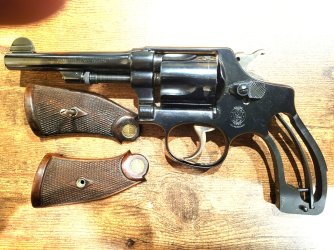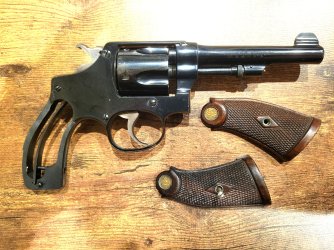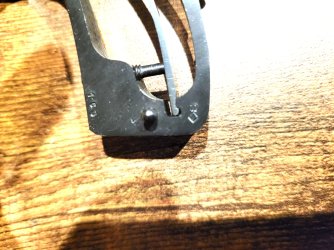unspellable
Allow me to mention a few things that haven't been brought up here.
The model name of your revolver is actually roll stamped on the right side of the barrel: Regulation Police. Perhaps you didn't notice, but I can see it in your picture. Interestingly, S&W introduced .32 and .38 Regulation Police Models at around the same time, but for whatever reason, only the .38 caliber unit got the name on the barrel.
On the pre-war RP, the serial number always was stamped on the front strap instead of the butt. This was also true of the .22/32 Heavy Frame Target during the same time period. As far as I know, those were the only models to get that placement.
Regarding the hammer block, the K frame guns did get a hammer safety device incorporated in the design in the 19 teens. But it proved to be ineffective, resulting in the change to the sliding hammer block safety that was implemented in December 1944. I do not know if this is true on the I frames. However, after WWII, I, K and N frames all got the new sliding hammer block safety. When the J frame came along a few years later, it also got the new style safety.



